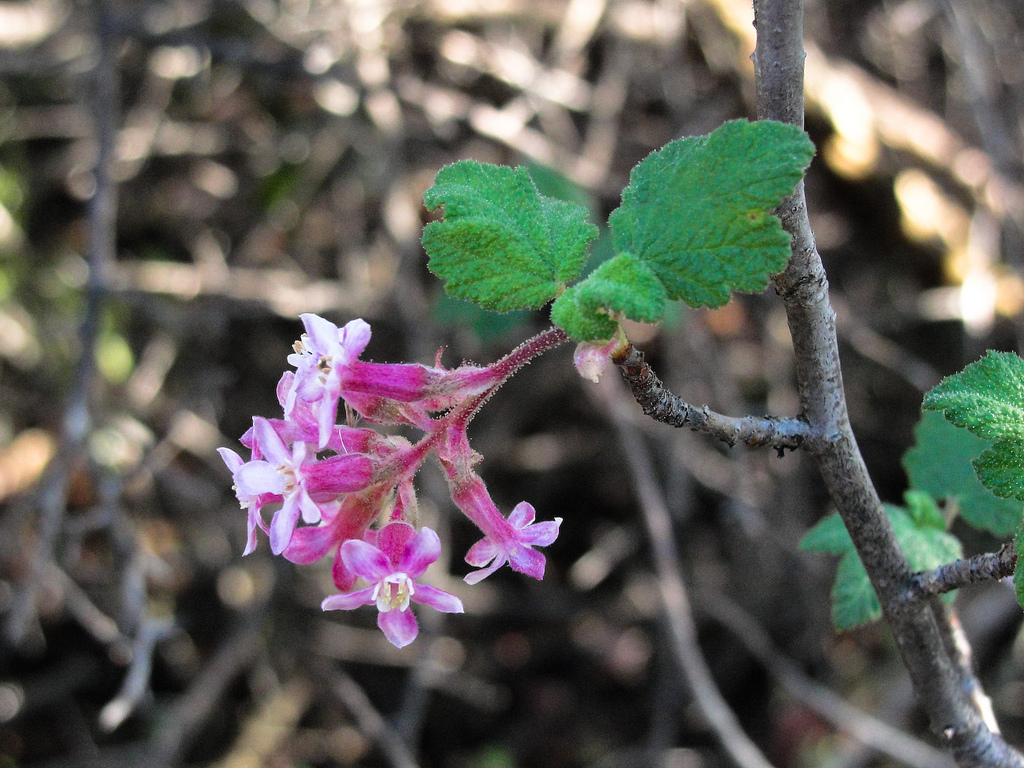
Chaparral currant is a refreshing change from succulents and grasses. It’s a gorgeous shrub that, when in bloom, is almost reminiscent of wisteria. The blooms range from pale pink to rosy pink and light purple.
A Colorful, Drought Resistant Beauty
Chaparral currant is a member of the gooseberry family. In the wild, it can grow as tall as 10 feet, but we recommend keeping it no taller than five feet for better bloom production. Chaparral currant has something to offer every drought tolerant garden.
The fruit of the chaparral currant is edible. Currants can be made into jams and jellies and used in other ways in desserts, and the leaves can be added to herbal teas. Always be sure to check with your landscaper before eating fruits from plants that aren’t familiar to you. One type of plant may produce fruit safe for people and animals while the fruit of another plant in the same family may be inedible and even dangerous to people.
One of the most attractive traits of chaparral currant is its blooming season. Chaparral currant often begins to bloom in October and produces fragrant flowers through May. It’s a must for winter color in your garden.
Just the Right Amount of Water
A young chaparral currant can wither away due to overwatering or under watering, so it’s best to let your landscaper handle the irrigation. Once established, the shrub shouldn’t be watered during the summer when it’s not blooming or producing fruit.
Placement in Your Garden
Chaparral currant grows in clay and rocky soil, on slopes and in woodlands. It can grow in sun or partial shade. Like purple needlegrass, chaparral currant likes the environment under an oak tree. Soil with good drainage is important.
Many people plant chaparral currant close to their birdbaths. The shrub is very attractive to birds, particularly hummingbirds. Hummingbirds love chaparral currant so much that they’ll visit your garden even if you don’t have a hummingbird feeder.
Chaparral currant is a good choice to line your walkway because it can grow equally well in the shade of your house and the direct sun of your yard. The fragrant flowers make it a pleasing shrub to plant around your patio. Plant chaparral currant in areas where you and your guests can enjoy watching hummingbirds feeding from the blooms.
Chaparral currant attracts butterflies as well as hummingbirds. The shrub gives tailed copper butterflies a place to lay their eggs, and the foliage feeds the caterpillars.
Chaparral currant provides a much-needed lush, colorful element in drought resistant gardens. Due to its particular watering requirements in its juvenile phase, we recommend the care of an experienced landscaper so that chaparral currant achieves its full beauty. Call or email us to discuss adding this lovely shrub to your garden.
Things to Remember:
• Chaparral currant has specific watering needs in its first year
• It flowers from autumn through spring
• It’s attractive to hummingbirds
